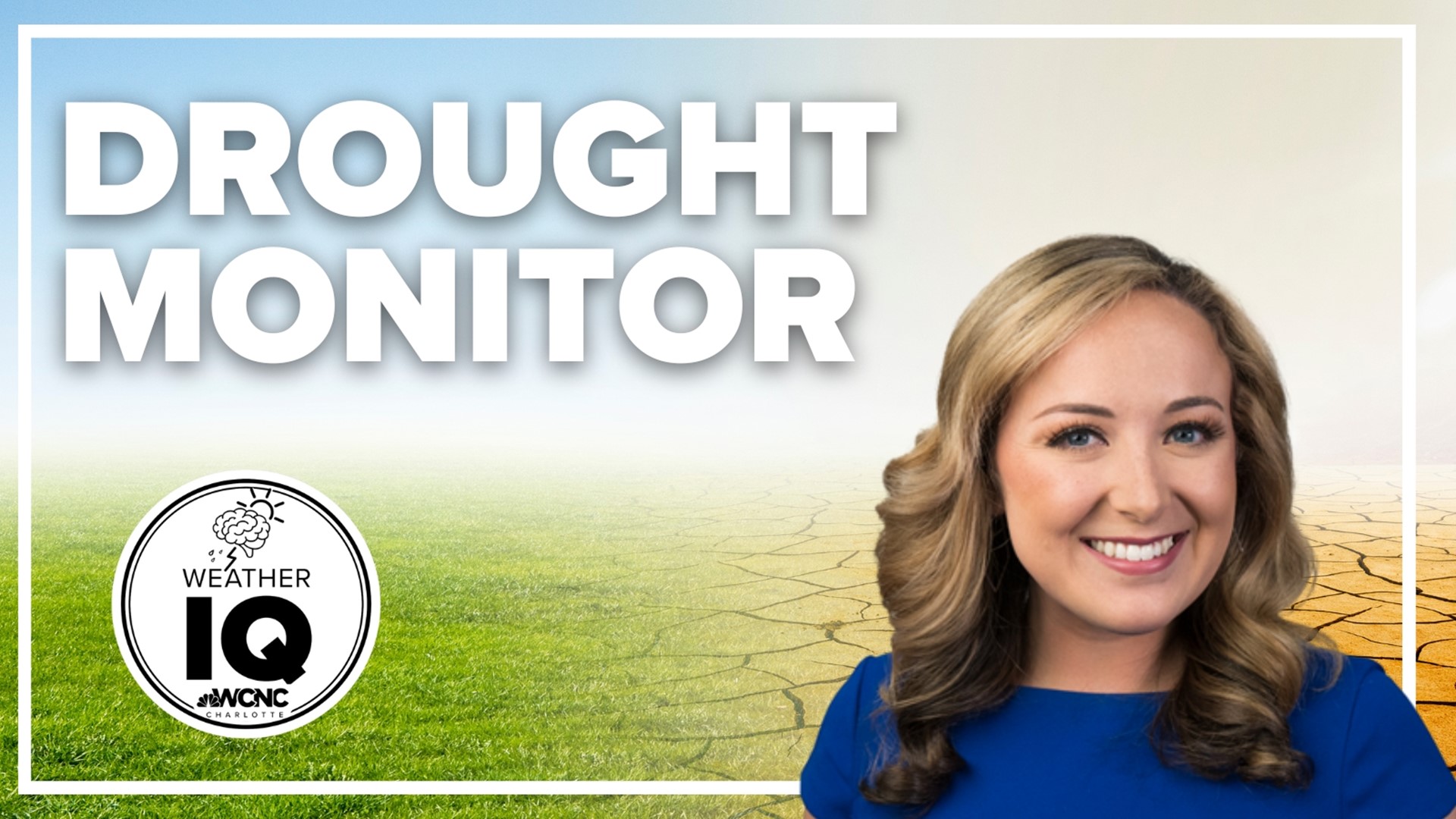CHARLOTTE, N.C. — You see it on WCNC Charlotte almost every week – a map of the United States, including the Carolinas, with blobs of yellow, orange, and red: the drought monitor.
But have you ever considered what this means for us or who decides where the colors go? Don't worry -- our weather team has you covered in this week's Weather IQ.
What is the drought monitor?
The United States Drought Monitor is a weekly assessment of drought conditions.
It is a team effort between the National Drought Mitigation Center, the National Oceanic and Atmospheric Administration, and the U.S. Department of Agriculture.
Many agencies use the drought monitor for a variety of reasons:
- The USDA uses the drought monitor to trigger disaster declarations and eligibility for low-interest loans.
- The Farm Service Agency uses it for its livestock forage program.
- The Internal Revenue Service uses it for tax deferral on forced-livestock sales.
While drought is often used in conjunction with rain – it’s more complicated than that.
How do they determine our drought levels?
Data comes from climatological drought data – including those for fire. The drought monitor also factors in vegetation health, soil moisture, and hydrologic data – like streamflow, ground water levels, reservoir levels, soil moisture, and snowpack.
Experts use this data and work with local observers to decide what ‘level’ of drought each part of the country is. This includes discussing ground truth and impacts with state climatologists, the National Weather Service, and more.
It's important to remember that drought is a normal part of the climate cycle. However, it's a slow-moving hazard that often causes people to underestimate the damage it can do.
Why can droughts be so bad?
Losses from drought are as substantial as those from hurricanes, tornadoes, and other weather disasters.
Drought causes loss of agriculture; affects the water supply, energy production, public health, and wildlife; and can contribute to wildfires across the country.
Contact Brittany Van Voorhees at bvanvoorhe@wcnc.com and follow her on Facebook, Twitter and Instagram.

